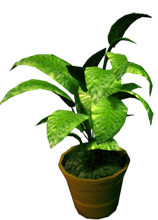 |
|
Water Indoor Plants Control: Important tips to water efficiently |
|
The watering needs of the potted plants kept in the house differ from the ones grown in the soil outside. Both over-watering and under-watering of plants can lead to their untimely death.
It is important that we understand the water requirements of our plants.
The water requirements may vary according to the types of plants and at different stages of growth and times of the year. • Water deeply-Offer good, long drinks instead of small sips to your plants. Shallow and insufficient watering may lead to weak root system which can make the plant more vulnerable to collapse. • A close observation of the leaves can tell you if you are doing it wrong. Yellowing and drooping leaves, browning of leaves, and wrinkled and shrunken leaves give you a clear hint whether the plant is over-watered or under-watered • Check the soil and the planter tray to know whether your plant is too wet or too dry. Seeing water is an indication that your plant is over-watered. • Stick your index finger into the potting medium about 1” deep and try to feel if the soil is dry, moist or soggy. It is often recommended to let the potting soil go dry(though, not completely) between waterings. • Water the soil and not the leaves. Wet leaves can make the plants susceptible to mildew, fungus and other diseases. The most congenial time to water the plants is in the mornings. If at all you are watering in the evenings, make sure not to wet the leaves. Dampening the plants in the evenings may make them prone to diseases and give way to fungal attacks. Make a point to use pots with drainage holes with a light weight potting medium instead of soil for your indoor plants. Also make sure to leave room for water in the pot and not to fill soil up the rim of the pot.
|
Water Indoor Plants
26/5/14 2:56 PM
9gardens.com
You must be logged in to post a comment.
click here to log in























